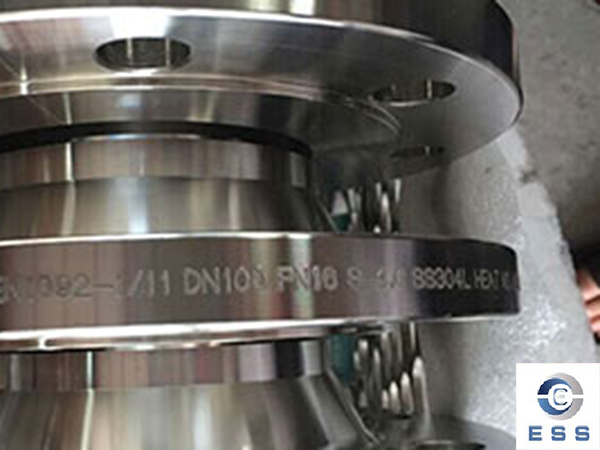Flange is an engineering and architectural device used to connect two sections of a pipe, duct or machine together in a secure and sealed manner. It is commonly used in industrial, automotive, construction and commercial applications. Flanges are made from different materials like steel, brass, bronze, plastic, aluminum and more. The most common flanges include slip-on, lap-joint, welding neck flanges and threaded flanges.
The purpose of using a flange is to provide an airtight and watertight seal between two components, connecting them firmly together and preventing fluid leakage. It also helps prevent the formation of suction pressure, which can hamper the efficiency of the system or even cause it to fail. Additionally, it holds the components securely together and makes sure they don’t vibrate or come apart.
In industrial applications, flange is used to connect pipes, valves, pumps and other equipment. It is often used in plumbing and air conditioning systems, steam systems, exhaust systems and more. In addition, some types of flange are used for attaching pipes to walls and ceilings.

In automotive applications, flange is used to fasten various parts together, such as engine blocks, cylinder heads, exhaust manifolds, transmission and transfer case covers, compressor housings and more. Automotive flanges are generally made of stainless steel, aluminum or another strong metal material for better endurance under extreme temperatures. It is also important to consider the size and the type of flange when choosing one for automotive application.
In commercial applications, flange is used to join two pieces of equipment together. This includes refrigeration and air conditioning systems, food processing and packaging equipment, as well as machinery used in chemical and pharmaceutical production. The purpose of joining two pieces of equipment together is to ensure that they function properly and to reduce the risk of contamination and product damage.
In general, there are four main types of flange used in engineering applications: slip-on flanges, lap-joint flanges, welding neck flanges and threaded flanges. Depending on the application, the flange used may vary, with each type having its own advantages and disadvantages.
Slip-on flanges use straight-edged surfaces and a round hole at the center where the two components slide in and out. They are also known as fixed flanges because there are no additional parts used to attach them together. These flanges are easy to install and are more suitable for low pressure systems.
Lap-joint flanges, on the other hand, have a curved edge and contain a socket-like feature that allows it to be assembled with a nut or bolt. This type of flange provides good pressure and temperature resistance and is usually used in high pressure systems.
Welding neck flanges have a tapered neck at the center, which allows them to bind the two components together tightly. This ensures secure connection between components and prevents the flow of pressure and heat in a system.
Threaded flanges, meanwhile, have a threaded hole at their center which enables secure connection with threaded fasteners. They are suitable for low to medium pressure systems and can be used in a variety of applications.
Flange is an essential part of many engineering and architecture applications and it comes in different types depending on the purpose and operating environment. It is important to choose the right type of flange for the system in order to ensure reliability and safety.













 Eastern Steel Manufacturing Co.,Ltd not only improve product production and sales services, but also provide additional value-added services. As long as you need, we can complete your specific needs together.
Eastern Steel Manufacturing Co.,Ltd not only improve product production and sales services, but also provide additional value-added services. As long as you need, we can complete your specific needs together.










